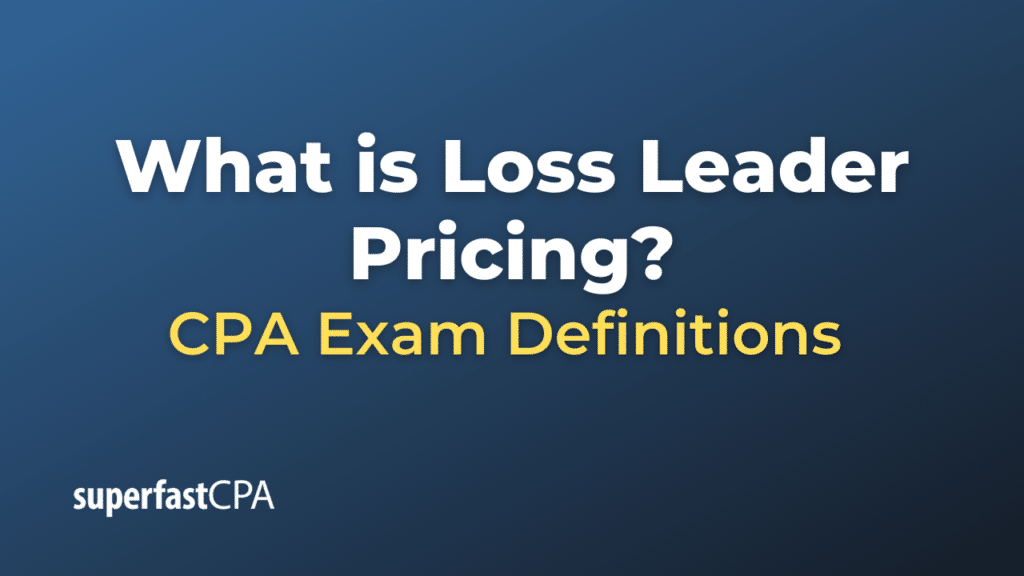Loss Leader Pricing
Loss leader pricing is a strategic pricing method where a product is sold at a price below its market cost to stimulate other sales of more profitable goods or services. This strategy is used to draw customers into the store (or website) with the expectation that they will purchase additional items or higher-priced products, thereby generating profits that exceed the loss taken on the discounted product.
This strategy is commonly used in various retail industries, including grocery stores, electronics stores, and online marketplaces. For instance, a grocery store might sell a popular item like milk at a very low price to get customers in the door, hoping they’ll buy other goods like produce, meat, or baked goods at the same time.
One important thing to remember is that the success of loss leader pricing depends on two factors:
- The “loss leader” product should be something that customers typically buy along with other items—either because they plan to do so (like buying ingredients for a meal) or because the discounted item puts them in a mood to spend more (impulse buying).
- The retailer should have a solid understanding of their customers’ buying habits and their own cost structures to ensure they can recover the loss on the discounted product with the additional sales generated.
This pricing strategy can be risky and is not suitable for every business or every situation. However, when executed correctly, it can be a powerful tool for driving customer traffic, increasing sales volume, and enhancing customer loyalty.
Example of Loss Leader Pricing
Let’s take the example of a supermarket.
Suppose a supermarket advertises a popular item, such as a gallon of milk, at a price of $2. This price is below the cost of the milk for the supermarket, meaning they are selling it at a loss.
However, the supermarket uses this strategy with the expectation that customers will not just buy the cheap milk, but will also purchase other items during their visit—bread, eggs, fruits, vegetables, etc. These other items have a higher profit margin, and the sales of these items are expected to offset the loss on the milk.
So, a customer who came in planning to just buy the $2 milk might end up spending $30 on groceries, giving the supermarket a net profit despite the loss on the milk.
It’s important to note that the success of this strategy depends on careful planning and a good understanding of customer behavior. Overuse can lead to reduced profit margins and customers who only buy the discounted items. However, if used strategically, loss leader pricing can increase overall sales and customer loyalty.














